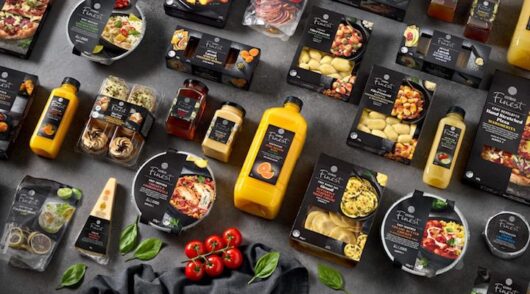When retailers create environments that merely reflect the category they’re in, they end up looking and feeling much the same, which, from a customer’s perspective, is nothing remarkable. Only by understanding what people value about places and spaces can retailers demonstrate they really get their customers and make the experience a rewarding and distinctive one. In place branding, we look at how a brand can be activated across multiple value drivers, including wellbeing, environment, techn
chnology, time and identity. These become chapters through which a rich story unfolds, through the lens of the central brand idea. NYC, for example, is a love (heart) story of a richly and poorly layered city, warts and all.
By applying this thinking and going beyond a generic shopfit, retailers can create much richer experiences that drive footfall and dwell time.
Nike were pioneers fusing sport with identity. The first Nike retail space in Santa Monica California wasn’t just a shoe store, but a gathering place for “oddball” athletes, where they could hang out with others who shared their (at the time, rather odd) love for running and shoes. Making the old new again, the very same store at 3107 Pico Blvd has recently reopened, paying homage to its roots and welcoming its ragtag community of athletes.
Breaking the mould today, flagship retail spaces like Walmart’s Intelligent Retail Lab explore how technology can make a shopping experience flow, enhancing time spent in a stimulating environment, smoothing the bumps, and rewarding people with a feeling of wellbeing, all while testing and learning how to do better by customers.
Retailers unable to invest in lavish flagship stores can borrow from the big thinking of inspirational landlords. Burwood Brickworks celebrates the human connection to nature, employs smart technology, gives visitors access to natural light and fresh air from all retail outlets and is the first Australian shopping centre to include a fully operational rooftop farm. It’s on its way to becoming the most sustainable shopping centre in the world, by achieving certification from the Living Building ChallengeTM.
Not everyone has designs on bricks and mortar. Neobanks have been described as the new era of retail banking, with greatly reduced overheads. Up hits every customer value driver through its app. Its intuitive tech respects customers’ time, makes them feel better about banking and life in general, and is a choice that reflects well on customers who identify as digital natives. Its online architecture doesn’t slavishly follow banking product categories. It redefines products in a surprising way that genuinely empathises with customers and makes intuitive sense, such as “Kill Bills,” and “Life Savers.”
Re-inc is not just a fashion label, or online retailer, but describes itself as a purposeful lifestyle brand. It creates and sells gender-neutral apparel, alongside original art. It rewards browsing time in an environment akin to an online art gallery, respects self-defined identity, and promotes wellbeing through inclusion. What it may or may not sell in the future is completely open. It’s like an online department store of human value.
The most revolutionary retailers don’t box themselves into a category, but successfully align themselves to human value drivers, becoming genuinely “customer centric experience architects,” while losing the jargon.
Moensie Rossier is a Strategy Director at Principals, where she helps make brands a force for positive change, in keeping with the agency’s purpose. Over the past 20 years she’s worked across a broad range of categories locally and internationally, defining brand positioning and linking it to internal culture and customer experience. Her retail clients have included Australian success stories like Kmart.







